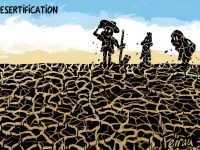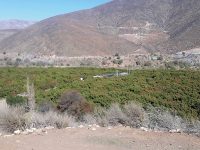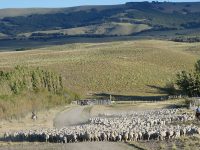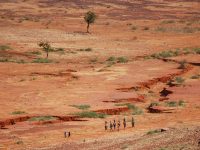
Esteve Adam. La Blanca (Bardenas Reales). Oil on Daler paper, 21 × 29.7 cm.
Hyper-arid, arid, semi-arid and dry-sub-humid climate zones (all of them considered drylands) occupy over 40 % of the Earth’s land surface and are home to more than 2 billion people. Contrary to the popular image of this important set of biomes, drylands are home to 36 % of carbon stores, 30 % of forested areas, 50 % of the world’s livestock, and 44 % of croplands. These figures give an idea of their social, economic, and ecological importance – the focus of the monograph’s first article – and argue for the need to know and understand their functioning and manage human activities in an increasingly changing climate scenario. This is key to enabling their development and preventing their desertification.
Recent estimates suggest that one-fifth of drylands are already desertified, and the process is accelerating. The fight against desertification has not presented very effective solutions to date, and the reasons have to do, as Víctor Castillo explains, with the historical construction of the concept and the conflicting interests surrounding the United Nations Convention to Combat Desertification, one of the consequences of which is the estrangement between science and politics. The works that complete the monograph examine the main land uses and their consequences. Laura Yahdjian and her colleagues illustrate the importance of understanding the effects of grazing – the main use of drylands (62 %) – on vegetation and soil, to design strategies aimed at preventing desertification in the Argentine Patagonia. Anahi Ocampo and her co-authors focus on the use of water resources, exploring cases from Argentina, Bolivia, Chile, and Mexico concerning irrigation agriculture and mining. Based on these experiences, they show how water uses and visions of development compete in an increasingly pressing climate scenario.
We hope that the articles in this monograph will help readers understand the importance of drylands and the need for development to go hand in hand with the safeguarding of their resources. The sustainability of these fascinating places (and of the planet as a whole) depends on offering opportunities to their inhabitants, while being aware that the vulnerability of their resources, aggravated by climate change, requires careful land management.





